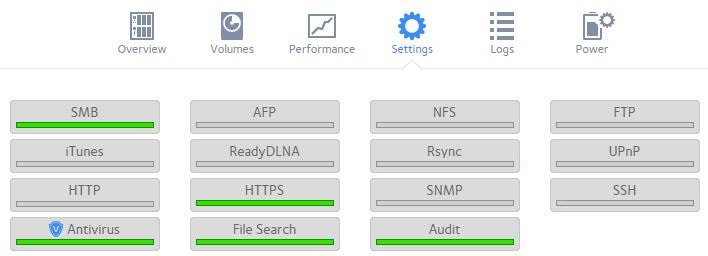

I never wanted to lose any of my precious files and digital photos again. The majority of videos had been streaming well, and all files had also been backed up to another, offsite ReadyNAS 314 for additional redundancy. I had been using the 4-disk ReadyNAS 314 since 2013 without a single incident of data corruption, and had steadily expanded its storage capacity over the years. As videos became larger, 4K files could not be smoothly handled by the Ultra 4, and I replaced it with the ReadyNAS 300 line a year later.
#Grsync readynas software#
It was a great NAS and I started building up my movie, TV, and personal video library for streaming via the Plex Media Server, a free software that presents media in a Netflix-like interface.
#Grsync readynas series#
Netgear decided to revamp the product by switching from ARM processors to Intel, and performance was so great, I sold the NV+ and bought the Intel Atom-based ReadyNAS Ultra 4 series in 2012. The NV+ was plagued by slow network transmissions and files seemingly took forever to copy from one location to another.

As frustrating as it was, it thankfully never happened again and I had restored most from backup. My first NAS was the Infrant ReadyNAS NV+ purchased in 2008 and over the years, it only had failed once by inexplicably corrupting all data. I had been using the ReadyNAS series since before Netgear bought the French company that started it all: Infrant. This allows users to continue accessing the storage. The ability to replace a disk without having to power down the NAS. Timely replacement of a failed disk can be crucial in ensuring data does not get lost. Allows the RAID array to automatically turn on the extra disk after a drive failure to start its data protection rebuild.

There are also hybrid RAID levels, such as RAID 1+0 and 0+1 (see Wikipedia). RAID can be used with mechanical and/or faster, more reliable SSD drives. ReadyNAS X-RAID simplifies the process of RAID configuration and expanding storage capacity. Traditionally, a RAID configuration requires you to back up the data, tear down the array (which destroys all data on it), reconfigure it for the RAID level you want, and restore the files onto it. You cannot easily switch between RAID levels or expand the array’s storage capacity. A minimum of 4 disks are required and 2 are allowed to fail at the same time before all data is lost.
#Grsync readynas tv#
I will cover in this review how Plex could be used to serve movies, TV shows, and personal videos you own in the style of Netflix. Many NAS include features like scheduled backups, remote access over the internet, or even act as a media server with software like Plex. In short, a NAS allows for centralized storage with data protection and storage expansion capabilities. In this review, I provide the reasons for why the Netgear ReadyNAS had become my favorite NAS, and share comprehensive tips on making the most of it. Two of my favorite uses of a NAS are to (1) provide data protection and (2) to stream my movie, TV, and personal video collection in the style of Netflix via the free Plex Media Server application. The Netgear ReadyNAS series had reliably safeguarded my data and also had been hosting the Plex Media Server: a free software that presents your movie, TV, music, and personal video collection in a beautiful, Netflix-like interface. Losing important data - documents and treasured photos - can be a frustrating, sad, and time-consuming ordeal! I had encountered multiple losses over the past, two decades, and that experience prompted me to look into Network Attached Storage (NAS) devices to provide data protection and disaster recovery.


 0 kommentar(er)
0 kommentar(er)
